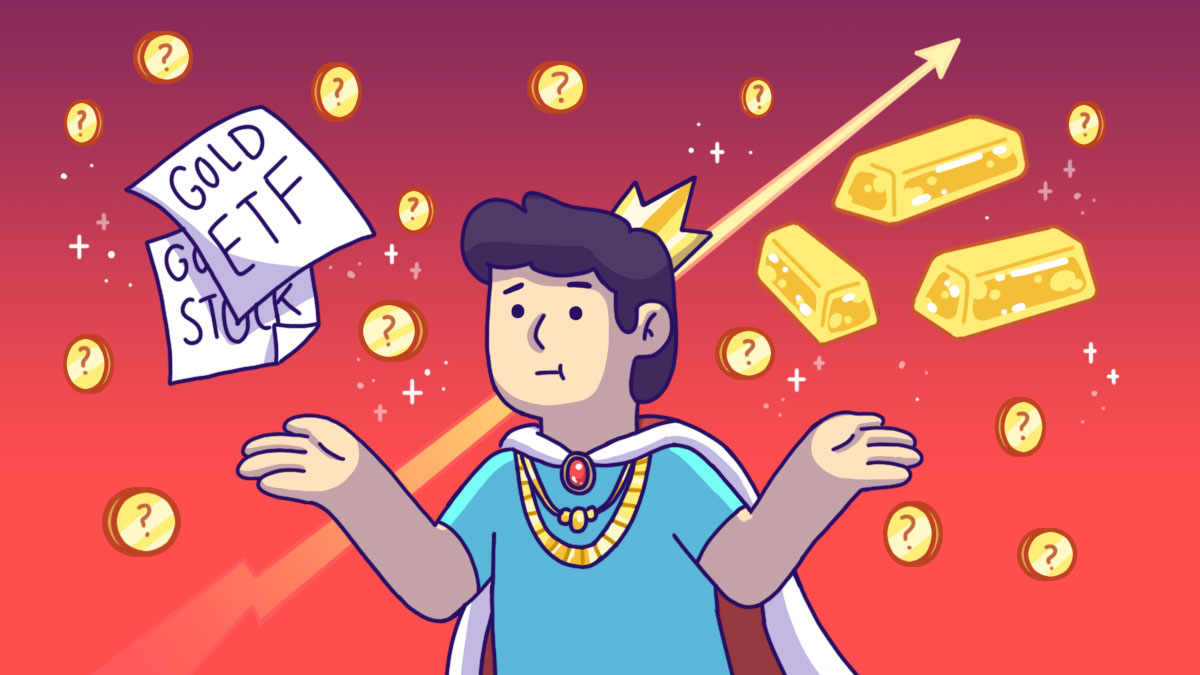The Simple Sum had published a sponsored guide to investing in gold on 10 November 2021. Below is an excerpt. Read the full article here.
While stock prices fluctuated wildly at the height of the COVID-19 pandemic last year, another asset class saw more and more investors flocking to it – gold!
Gold’s price hit an all-time high of US$2,063 (S$2,786.35) in August last year, its highest since 2011. And some experts predict gold’s price could climb even higher.
We probably shouldn’t have rolled our eyes at grandma when she bought that thick gold necklace. (“It’s so old-fashioned!”). Well, investing in gold is trendier than ever now.
Ways to invest in gold
There are three ways to purchase gold: as physical or digitised assets, shares or exchange-traded funds, or through gold futures.
Buying physical gold
Gold bars are a good way of storing large amounts of wealth in a small space, while gold coins work well for new investors, due to their smaller value. But gold coins tend to have an added minting fee.
Purchasing gold jewellery may be visually appealing but you’re paying more gram for gram because of the markup for design, craftsmanship and marketing costs. The markup can be anywhere from 20% to over three times the value of the raw material itself. Plus, the value of gold jewellery decreases if there are scratches, dents, or defects on it.

Image credit: The Simple Sum
Digitised gold
Solving the problem of storage, investors can buy digital gold, the electronic form of physical gold. Backed by gold reserves, the gold itself is safely held in vaults by private companies. Investors then prove ownership through digital records.
Owning gold digitally also makes it easy to trade. In this form, investors can determine where, when, and how they would like to obtain and trade their assets.
As trading is done online, digital gold is highly liquid – unlike physical gold, you don’t have to wait for the jewellery store, or the bank to open. It can be traded round the clock. Plus, as there is no lock-in period, investors can buy and sell whenever they see fit.
Gold ETFs
Exchange-traded funds (ETFs) allow traders to track gold prices without having to buy physical gold. Gold ETFs operate as trusts that hold physical gold and issue shares for it. Buying a share means owning a portion of the gold held by the trust. As these ETFs hold physical gold, their prices vary according to gold market prices.
Gold-related stocks
Buying shares from companies that are directly linked to gold, such as gold-mining companies or gold producers is another way to invest, without your having to buy the metal directly.
The main advantage of this is that returns are tied to gold prices. Some stocks even pay dividends. But as these stocks aren’t backed by physical gold, they are susceptible to market fluctuations, and you may lose your investment if the company’s performance is affected.
Gold futures
As its name suggests, gold futures are contracts through which a buyer agrees to purchase a specific quantity of gold at a predetermined price and date in the future.
This is one of the riskiest ways of investing in gold as it is a form of speculative investing. As futures contract is based on predetermined conditions, it does not account for current market rates.
When is a good time to buy gold?
Hugo CEO David Fergusson discusses with The Simple Sum the relevance of gold today. Read the full transcript here.
Gold prices are determined by several factors: supply and demand, inflation, interest rates, international gold prices, currency fluctuations and geopolitical issues.
In the short-term, gold’s price does fluctuate based on current events and economic conditions. But dollar-cost averaging into gold over the long term can be one way you can increase your allocation in gold while reducing your exposure to its short-term price fluctuations.
David Fergusson, Co-founder of Hugo adds, “Our view is that you should buy gold throughout the cycle and while in the savings mode of your life. The only time you should not buy gold is when you are more generally dis-saving, that is when you’re living off your retirement income”
The bottom line
Inflation, financial crises, external shocks, and uncertainty are events that will inevitably impact your investments over the long term. One way to reduce risk in your investments is to diversify your portfolio with gold.
Some experts suggest having 2% to 10% of your investments in gold. This way, when the rest of your investments are affected, gold’s increase in value can reduce the volatility in your portfolio’s value, and limit your exposure to losses.
With a proven track record that has stood the test of time, gold is a valuable asset to own. So, irrespective of your investment profile, you might want to consider including gold in your portfolio.
This article is an excerpt. Read the full sponsored guide published on 10 November 2021 by The Simple Sum.


